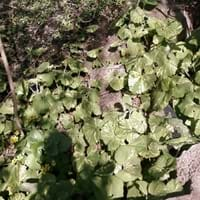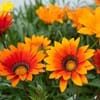Life Span
Perennial
Perennial
Origin
China, Japan, Korea
Europe
Types
Not Available
Pulmonaria Bubble Gum , Pulmonaria ‘Polar Splash’ , Pulmonaria ‘Moonshine’
Number of Varieties
Not Available
Habitat
gardens, Grassland, Homesteads, Open areas
Alpine Meadows
USDA Hardiness Zone
5-9
4-8
Sunset Zone
2a, 2b, 3a, 3b, 4, 5, 6, 7, 8, 9, 10, 14, 15, 16, 17, 18, 19, 20, 21, 22, 23, 24
1a, 1b, 2a, 2b, 3a, 3b, 4, 5, 6, 7, 8, 9, 14, 15, 16, 17
Habit
Clump-Forming
Cushion/Mound-forming
Flower Color
Light Yellow, Ivory
Red, Salmon, Coral
Flower Color Modifier
Bicolor
Not Available
Fruit Color
Not Available
Non Fruiting Plant
Leaf Color in Spring
Green, Light Green, Light Yellow, Ivory
Dark Green
Leaf Color in Summer
Green, Light Yellow, Ivory
Dark Green
Leaf Color in Fall
Green, Light Yellow, Ivory
Dark Green
Leaf Color in Winter
Not Available
Light Green
Leaf Shape
Round
Lanceolate
Plant Season
Spring, Summer, Fall
Spring, Summer, Fall
Sunlight
Partial shade, Full Shade
Partial Sun, Partial shade, Full Shade
Type of Soil
Clay, Loam, Sand
Clay, Loam
The pH of Soil
Acidic, Neutral, Alkaline
Acidic, Neutral, Alkaline
Soil Drainage
Poorly Drained
Average
Bloom Time
Early Spring, Late Winter
Early Spring, Spring, Late Winter
Tolerances
Wet Site
Drought, Rocky Soil
Where to Plant?
Ground, Pot
Ground, Pot
How to Plant?
Divison, Stem Planting
Divison
Plant Maintenance
Medium
Medium
Watering Requirements
Allow soil to be completely dry in between waterings, Keep ground moist, Needs 2-3 times watering per week, Over-head watering, Requires watering in the growing season
Keep ground moist, Keep the Soil well drained
In Summer
Lots of watering
Lots of watering
In Spring
Moderate
Moderate
In Winter
Average Water
Average Water
Soil pH
Acidic, Neutral, Alkaline
Acidic, Neutral, Alkaline
Soil Type
Clay, Loam, Sand
Clay, Loam
Soil Drainage Capacity
Poorly Drained
Average
Sun Exposure
Partial shade, Full Shade
Partial Sun, Partial shade, Full Shade
Pruning
Remove deadheads, Requires very little pruning, Shape and thin as needed
Prune after flowering, Remove damaged leaves, Remove dead branches, Remove dead leaves
Fertilizers
All-Purpose Liquid Fertilizer
All-Purpose Liquid Fertilizer, Compost
Pests and Diseases
Pests and diseases free, Red blotch
Pest Free, Powdery mildew
Plant Tolerance
Wet Site
Drought, Rocky Soil
Flower Petal Number
Not Available
Single
Foliage Texture
Bold
Medium
Foliage Sheen
Glossy
Matte
Attracts
Not Available
Hummingbirds
Allergy
no allergic reactions
Unknown
Aesthetic Uses
Showy Purposes
Borders, Informal Hedge, Ornamental use, Showy Purposes, Woodland margins
Beauty Benefits
Not Available
Not Available
Environmental Uses
Air purification
Air purification
Medicinal Uses
No Medicinal Use
No Medicinal Use
Part of Plant Used
Whole plant
Not Available
Other Uses
Not Available
Unknown
Used As Indoor Plant
Yes
Yes
Used As Outdoor Plant
Yes
Yes
Garden Design
Bog Garden, Container, Feature Plant, Water Gardens
Edging, Groundcover, Mixed Border, Rock Garden / Wall
Botanical Name
PETASITES japonicus 'Variegatus'
PULMONARIA rubra 'David Ward'
Common Name
Giant Butterbur, Japanese Butterbur, Variegated Butterbur
David Ward, Red Lungwort
In Hindi
variegated butterbur
david ward
In German
bunte Pestwurz
david ward
In French
pétasite panachée
david ward
In Spanish
butterbur abigarrado
david ward
In Greek
διαφοροποιημένα butterbur
david ward
In Portuguese
butterbur variegada
david ward
In Polish
barwny Lepiężnik
david ward
In Latin
varius butterbur
david ward
Phylum
Not Available
Tracheophyta
Class
Not Available
Magnoliopsida
Family
Asteraceae
Boraginaceae
Genus
Petasites
Pulmonaria
Clade
Angiosperms, Asterids, Eudicots
Not Available
Tribe
Senecioneae
Not Available
Subfamily
Not Available
Not Available
Number of Species
Not Available
Season and Care of Variegated Butterbur and David Ward
Season and care of Variegated Butterbur and David Ward is important to know. While considering everything about Variegated Butterbur and David Ward Care, growing season is an essential factor. Variegated Butterbur season is Spring, Summer and Fall and David Ward season is Spring, Summer and Fall. The type of soil for Variegated Butterbur is Clay, Loam, Sand and for David Ward is Clay, Loam while the PH of soil for Variegated Butterbur is Acidic, Neutral, Alkaline and for David Ward is Acidic, Neutral, Alkaline.
Variegated Butterbur and David Ward Physical Information
Variegated Butterbur and David Ward physical information is very important for comparison. Variegated Butterbur height is 60.00 cm and width 120.00 cm whereas David Ward height is 25.40 cm and width 81.30 cm. The color specification of Variegated Butterbur and David Ward are as follows:
Variegated Butterbur flower color: Light Yellow and Ivory
Variegated Butterbur leaf color: Green, Light Green, Light Yellow and Ivory
David Ward flower color: Red, Salmon and Coral
- David Ward leaf color: Dark Green
Care of Variegated Butterbur and David Ward
Care of Variegated Butterbur and David Ward include pruning, fertilizers, watering etc. Variegated Butterbur pruning is done Remove deadheads, Requires very little pruning and Shape and thin as needed and David Ward pruning is done Prune after flowering, Remove damaged leaves, Remove dead branches and Remove dead leaves. In summer Variegated Butterbur needs Lots of watering and in winter, it needs Average Water. Whereas, in summer David Ward needs Lots of watering and in winter, it needs Average Water.





